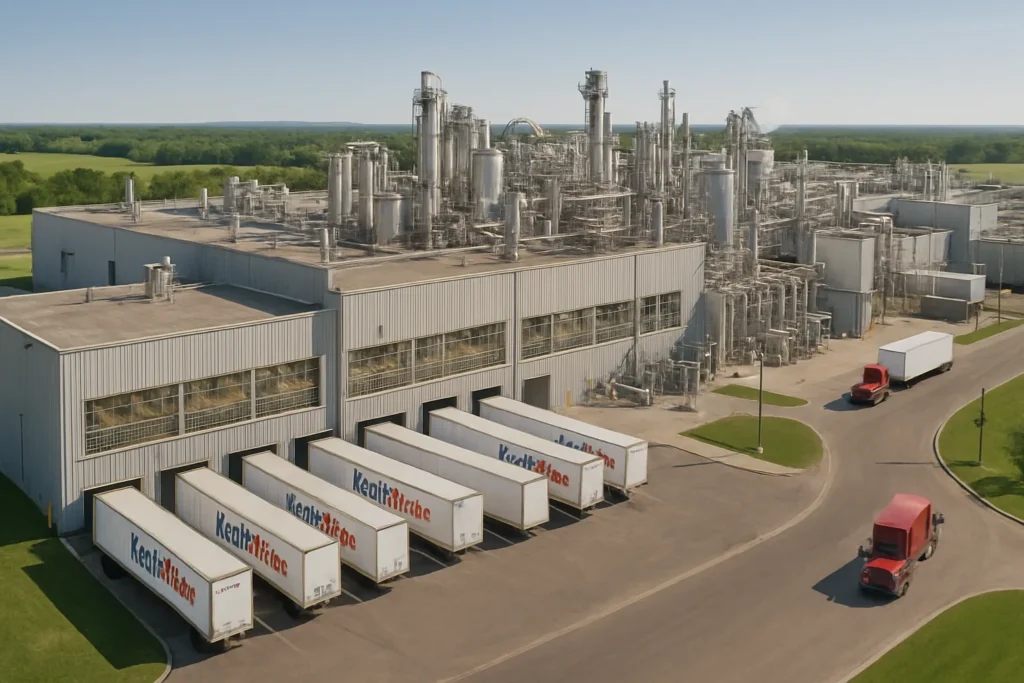The Big Bet: Rebuilding in the Shadow of Tariffs
Against a backdrop of wavering consumer confidence and relentless tariff battles, Kraft Heinz’s announcement of a $3 billion investment in their U.S. factories landed with both fanfare and a hint of corporate desperation. The food giant—famous for pantry fixtures like Heinz ketchup and Kraft macaroni and cheese—framed its largest domestic upgrade in a decade as a bold, forward-looking play. But beneath the glossy press releases, the climate surrounding this historic move reveals layers of challenge, resilience, and political consequence.
The U.S. factory overhaul is more than a brick-and-mortar refresh. Pedro Navio, Kraft Heinz’s president of North America, stressed that “the investment is a long-term commitment to sustainable food production, not merely a knee-jerk reaction to short-term trade disruptions.” Yet the numbers tell their own story. First-quarter sales dipped a worrying 6.4% compared to last year, and projections for 2025 point to a further organic sales decline between 1.5% and 3.5%—signs of a company, and an industry, reeling from persistent macroeconomic headwinds.
Historical perspective is instructive here: American manufacturing has become the political football of modern trade wars. Since President Trump’s tariff salvo in 2018, the food sector has routinely absorbed whiplash from shifting import costs—especially on essentials like coffee. Kraft Heinz, although minimally reliant on Chinese imports, has still felt the reverberations. Tariffs on coffee imports have squeezed margins on its Maxwell House operations, prompting moves like this new multimillion-dollar investment in efficiency, cost-cutting, and product agility.
So who comes out ahead? On paper, domestic upgrades mean local jobs—Kraft Heinz estimates 3,500 new construction positions during the overhaul phase. But despite such numbers, the gains for rank-and-file employees are transitory; after renovations, there will be minimal permanent increases in the workforce. For struggling communities in factory towns, this hardly resolves anxieties about job security or long-term economic vibrance.
Tariff Tensions and the Corporate Tightrope
Peel back the curtain on Kraft Heinz’s strategy, and you’ll find a company locked in a delicate balancing act. Corporate leaders point to efficiency upgrades and supply chain enhancements as vital shields against supply shocks. But the reality is that tariffs function as an unpredictable tax on both companies and consumers. Food industry giants end up absorbing costs when possible but often resort to passing them on to grocery shoppers—a move that hits hardest among lower- and middle-income families already grappling with inflation.
Harvard trade economist Emily Blanchard underscores this point, noting, “While tariffs are billed as a way to protect American jobs, they often spark retaliatory measures, hurt U.S. exports, and create widespread uncertainty for global businesses.” The ripple effects are real: Kraft Heinz exports significant volumes to Canada, so their calculations now include not just the domestic marketplace but also the complex web of North American trade.
Beyond that, the specter of price hikes looms large. Kraft Heinz has proactively required suppliers to give 60 days’ notice before price increases—an attempt to inject predictability into a volatile environment. Even so, given the macroeconomic squeeze and consumer sentiment tracking near its lowest point in seventy years (Pew Research, 2024), such moves risk being little more than sandbags against an economic flood.
“While tariffs are billed as a way to protect American jobs, they often spark retaliatory measures, hurt U.S. exports, and create widespread uncertainty for global businesses.”
What’s striking is how familiar this cycle feels. Think back to the manufacturing resurgence rhetoric of the early 2010s, when politicians from both parties promised blue-collar comebacks. Frequently, such promises delivered short bursts of investment and headlines, but the deeper structural issues—automation, global competition, stagnating real wages—remained largely unaddressed. Today’s Kraft Heinz narrative echoes those cycles, with splashy investments masking slower-moving, systemic pressures.
Promises, Pitfalls, and the Path Forward
The progressive promise of revitalized American manufacturing is one of inclusive prosperity, fair wages, and sustainable communities. Kraft Heinz’s $3 billion gamble may boost operational efficiency and stave off some competitive threats, but it does little to bend the broader arc toward equity. The lion’s share of the financial benefit flows to shareholders and corporate management—not the front-line workers or the communities where these plants reside.
On the environmental front, the food giant points to sustainable sourcing—California tomatoes and Idaho potatoes headline the ingredient lists. Still, scaling up production absent genuine protections for workers and agricultural communities risks repeating the old mistakes of American industry: profit first, people second. According to Labor Works, just 9% of new jobs connected to these types of plant upgrades persist long-term, while permanent staff sizes often remain flat or shrink due to automation gains.
A closer look reveals missed opportunities—a more progressive approach could pair such investments with living wage guarantees, local hiring mandates, or support for displaced workers. Consider the successful public-private partnerships in the renewable energy sector, where incentives are tied directly to outcomes like net job creation or carbon reduction. These models show that smart policy can demand more of corporate America—and deliver more tangible social returns.
The Kraft Heinz story is, in the end, a microcosm of modern American capitalism: bold spending under duress, dazzling pronouncements for Wall Street, but little relief for families caught in the crosscurrents of inflation and industrial upheaval.
Is there a better way? Only if we insist on it. The potential is there for American manufacturing to reclaim its place not just as an engine of profit, but as a force for collective well-being—where investments yield dividends for all, not just the few. That will require more than ribbon-cutting ceremonies. It will demand brave policy, vigilant public oversight, and a willingness to ask who truly wins, and at what cost.

